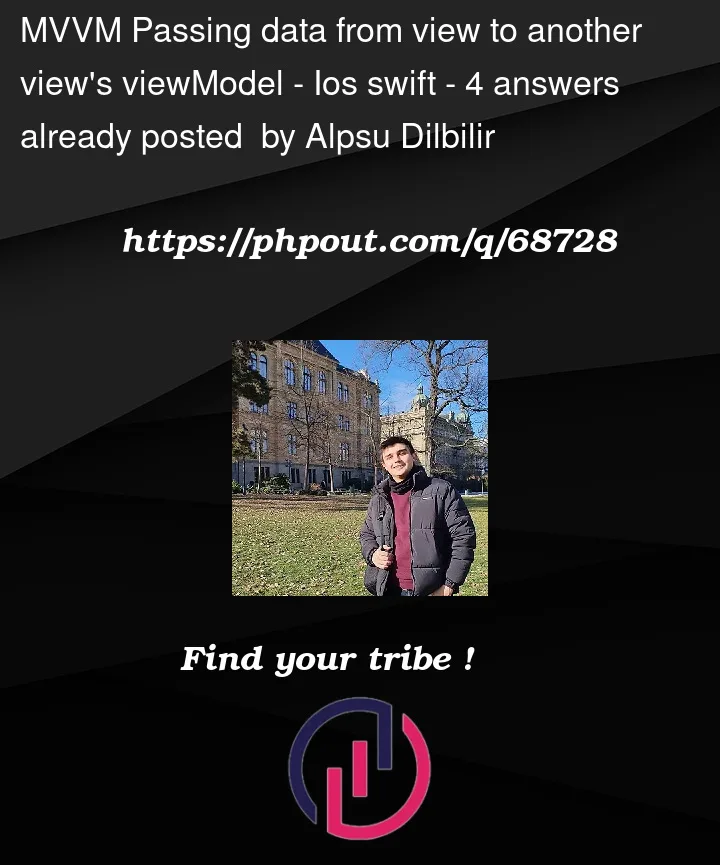I’m new to MVVM and i am trying to pass a location data from my ContenView to DetailsView’s viewModel which is DetailsViewViewModel.
My Opening View -> ContentView (My data is here)
Second View -> DetailsView
Data must be reach -> DetailsViewViewModel
Here is my sheet in ContentView
.sheet(item: $viewModel.selectedPlace) { place in
DetailsView(location: place) { newLocation in
viewModel.updateLocation(location: newLocation)
}
I know i’m trying to send my data to details view and it’s wrong. It was like that before i convert the architecture to the MVVM and this is the only place that i couldn’t convert.
Also here is my DetailsViewViewModel
extension DetailsView {
@MainActor class DetailsViewViewModel: ObservableObject {
enum LoadingState {
case loading, loaded, failed
}
var location: Location
@Published var name: String
@Published var description: String
@Published var loadingState = LoadingState.loading
@Published var pages = [Page]()
init() {
self.location = // ??? how should i initialize?
self.name = location.name
self.description = location.description
}
What is the proper way to this. Using another views data in another views viewmodel.




4
Answers
since location data is your business layer data, you need a use-case to provide it to both view models, and to optimize it caching the response is the way to go.
-ViewModel is responsible to hold the latest view states and data
-The domain layer is responsible to handle business logic
-The data layer (networking, cache, persistence, or in-memory) is responsible for providing the most efficient data storage/retrieval solutions
So, if you are okay with these defenitions and think of writing test for these view models you know that it is not right to inject data from another ViewModel because you would not test that view model on making sure it passes the data to the next viewModel and it is not its responsibility, but you write many tests for you data layer to make sure service calls and caching systems are working properly.
Let me try to put in an example that uses the convenience of
@EnvironmentObject:Your view model is a class that conforms to
ObservableObject, so you can have those nice variables@Publishedthat change the state of the views.Your main view – or also your
App– must "own" the view model, meaning it needs to create the one and only instance of your view model that will be used by all views.You pass the view model from one view to another using
@StateObjectand@ObservableObject, but in this example I prefer to use another approach. Make your main view inject the instance of your view model in the environment, so all other views will read from that. The main view uses.environmentObject(viewModel)to do that.The other views read the view model from the environment by calling
@EnvironmentObject. They create a variable specifying only the type – there can only be one instance per type in the environment.This is the way with which all view will read from the same model. See below a functioning example:
Step 1:
Steps 2 and 3:
Step 4 in two different views:
You need to initialise DetailsViewModel from ContentView sheet when you are adding the DetailsView like below:
ContentView
DetailsView:
DetailsViewModel: